CBD Ointment Gives You Instant Pain Relief – Here’s How
13 Comments
Do you have aches and pains, but traditional creams don’t cut it, or the pills you’ve taken do more harm than good? It’s time to consider using topical CBD ointment, derived from cannabidiol, a non-psychoactive compound found in marijuana.
We have answers for you. And if one topical topic’s been on your mind more so than others, just click on that link right below!
What you'll learn in this post:
[Click any of the section titles below to jump there]
- What Is CBD Ointment?
- How Long Has Topical Cannabis Been Used?
- What Is CBD Ointment Used For?
- What's the Best Way to Apply CBD Ointment?
- CBD vs. THC: What's the Difference?
- What Makes Ointments, Creams, Salves, Balms, Oils, Lotions & Patches Different?
- How Popular Are Topicals in the U.S.?
- Do Medical Experts Support Cannabis Topicals Use?
- What Are Some Popular CBD Topical Products?
- How Can I Make Your Own CBD Ointment?
- How Can I Buy CBD Ointment & Other Topicals?
What Is CBD Ointment?
CBD ointment is a safe, easy-to-use topical agent that can be applied to almost any bodily area to relieve several problems like soreness, inflammation, and irritated skin. When applied to the skin it doesn’t create the “high” effects that cannabis ingestion does via smoking, vaporizing or eating edibles.
So CBD ointment is a great alternative for people who don’t want cannabis’ THC high and/or for those who’d like to have other options besides over-the-counter steroid-based creams.
How Long Has Topical Cannabis Been Used?
Topical cannabis use dates back thousands of years. While its primary form of ingestion has always been smoking, it’s also traditionally been used as a medicinal component to existing remedies such as ointments, salves and tinctures.
Topical use has been linked to ancient Egypt, other parts of Africa, and in Europe, where it was used for its antiseptic, antibiotic and pain-relieving properties to treat bacterial infections, skin infections, foot inflammation and localized pain.
After all, ancient civilizations relied on plant medicines for their natural therapies, and it’s really quite a shame that our modern society has departed so much from analgesic herbs. Luckily, with legalization efforts succeeding nationwide, we’re seeing substantial new interest in cannabis-derived topical therapies.
What Is CBD Ointment Used For?
CBD contains anti-inflammatory and anti-spasmodic properties, kills pain, enhances circulation and regenerates cellular activity. There are a wide variety of conditions that can be treated by using CBD ointments and other CBD infused topicals. The list is long, but a few of the most commonly treated are:
- Skin conditions: eczema, dermatitis, psoriasis, rashes, fungal infections, dry skin, blisters, etc.
- Localized joint pain, arthritis pain, inflammation muscle soreness, sprains and other mild injuries.
- Faster healing of wounds, cuts, scrapes and bruises.
- Chronic pain
- Multiple sclerosis
- Nerve pain/sciatica
- Seizures
- Muscle spasms
- Earaches
- Migraines
- Menstrual cramps
- Hemorrhoids
- Mental disorders (anxiety, depression, PTSD)
Top healing (and in some cases, now world renowned) CBD strains include:
- ACDC: a hybrid of THC and CBD considered to be the most effective for pain relief. This strain also produces relaxation and euphoria as well as a heightened focus.
- Harlequin: a sativa-based strain with a CBD and THC ratio of 5:2, Harlequin’s especially useful in treating inflammatory-based pain like arthritis or fibromyalgia. Its psychoactive properties are euphoria, increased energy and enhanced focus.
- Charlotte’s Web: with less than 0.3% of THC, this potent CBD strain produces no psychoactive effects and is best used to treat migraines, neuropathic pain, and, maybe most effectively, epilepsy.
What’s the Best Way to Apply CBD Ointment?
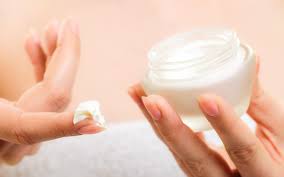
Topical CBD absorbs into the skin and is really successful when liberally applied to the affected area(s). When using topicals, be sure to first wash the area with soap and water to remove any excess dirt, oil buildup, or previously applied CBD lotions or topical creams. Doing so will ensure that there aren’t any barriers between the ointment and your skin, creating the best environment for absorption.
For adults, generously rub the ointment onto the affected area and allow it to absorb for several minutes before covering with clothing and/or bandages so it doesn’t rub off. Be sure to watch the area for bad reactions like itchiness, redness, soreness, rashes or bumps.
For children and the elderly, apply smaller amounts so they don’t over medicate since their skin is naturally thinner.
Once applied, the ointment can take anywhere from 1-48 hours to provide relief, depending on the dosage, how often it’s used, and severity of your condition.
Ointment producers typically list the recommended rate of use, which usually ranges from 1-3 times a day to as needed. Again, how often you use the ointment will depend on the severity of your condition and the product’s CBD and THC levels, so begin with doses as low as 2-3mgs then increase the amount if needed.
CBD vs. THC: What’s the Difference?
CBD appears in both cannabis and hemp, and both are widely available as ointments, but while hemp-based products contain no active THC, cannabis-derived products often do.
Seeing as how CBD and THC offer similar health benefits, patients may opt for high-CBD cannabis ointments with or without THC. But if you decide to combine CBD and THC, you’ll reap the benefits of both, from what’s known as the “entourage effect.” Research suggests that using the two together are more effective than when used individually, a fact that’s been proven with cancer research as well as with multiple ailments.
When CBD and THC are combined they produce a powerful one-two punch by enhancing each other’s most useful characteristics. Interestingly, CBD slows down the breakdown of THC in the liver, allowing THC’s therapeutic effects to last longer.
If you have plant allergies, you might want to use hemp-based CBD ointments instead of those produced from cannabis. Marijuana cultivators tend to use pesticides and other herbicides that could irritate or even worsen skin conditions for those who are particularly sensitive to these chemicals.
What’s the Difference Between Cannabis Ointments, Creams, Salves, Balms, Oils, Lotions & Patches?
Balms, creams, lotions, ointments & salves
Highly-concentrated cannabis salves and balms are great options for healing wounds and small cuts, while creams, lotions and ointments are best for alleviating itchiness, dryness, burns, rashes and other inflammatory skin conditions.
Oils
Oils tend to be higher in potency and can include THC or just CBD. They’re most likely mixed with other beneficial herbs and essential oils that penetrate the skin for deeper healing. Oils are also more versatile because they can be ingested. It’s no secret that high doses of cannabis oil have been used to effectively treat epilepsy, kill cancer cells, heal ear infections and stop migraines.
Patches
Transdermal patches containing CBD and/or THC are highly popular among pain relief seekers, as they deliver cannabinoids straight into the bloodstream for faster and more effective healing. Because they adhere to the skin they can last longer than other topicals. You can even sleep with them on and can participate in just about any activity while wearing them, whereas weed creams, marijuana salves or cannabis lotions can rub off easily.
Patches typically offer a range cannabinoids with a split 1:1 ratio of CBD to THC, but you can choose patches based on your condition and the effects you wish to receive.
Keep in mind, patches containing THC will produce a psychoactive effect that can be just as, if not more, potent than smoking, vaping or eating edibles since it’s absorbed more quickly; so CBD patches may be the best option if you need to function without those effects.
How Popular Are Topicals in the U.S.?
There are a few reasons why topical cannabis products are making their way into mainstream cannabis culture.
First, many unfamiliar patients would rather not ingest cannabis due to its psychoactive effects, and prefer to inch slowly into their cannabis experience with something milder like a tincture or topical. We totally get that, trying THC for the first time for its psychoactive effects can be intimidating (although trust us, with the proper dose, anyone can feel comfortable with it).
Next, chronic smoking could take a harmful toll on the lungs, although not enough long-term research has been done to say definitively. Some preliminary studies even show that smoking the herb could have benefits for your overall lung health, but only time will tell.
Regardless, if you want the health benefits that cannabinoids provide, topical options present a great existing alternative to other means of use.
This is especially true for aging patients, parents who use the CBD products on their children, or adults who are concerned about practical matters (like failing drug tests, for example). For these reasons, the topical medical marijuana industry is growing rapidly here in the United States, with its primary consumers being female & senior chronic pain sufferers.
That being said, when compared with the other methods of consumption, topical applications lag far behind. From our own online cannabis marketplace (think of it like the GrubHub for cannabis), topicals only make up about 1% of all purchases. Even at just 1% of total purchases, topicals saw a 100% increase in popularity since the same time last year.
Do Medical Experts Support Topical Cannabis Use?
Given the stigma surrounding marijuana and cannabinoid use in general (which is dissipating quickly), and marijuana’s Schedule I drug status with the federal government, substantial scientific and clinical research on the health benefits or consequences of cannabis have been severely constrained.
In fact, other countries like Israel are far ahead of the U.S. in attempting to decode how cannabis acts on one’s physical and psychological well-being.
That being said, preclinical evidence suggests that CBD’s therapeutic, neuroprotective, sedative and anti-inflammatory effects are very promising. Overall, the medical community agrees that CBD can provide powerful relief for many conditions and poses little to no health risk.
What Are Some of the Most Popular CBD Topical Products?
When it comes down to choosing a CBD topical, the main factors will be the CBD:THC ratio, the type of cannabinoid that should work best for your condition, and the product’s scent (although that last one usually isn’t a critical factor for many of us). Here are a few highly-rated CBD containing topicals:
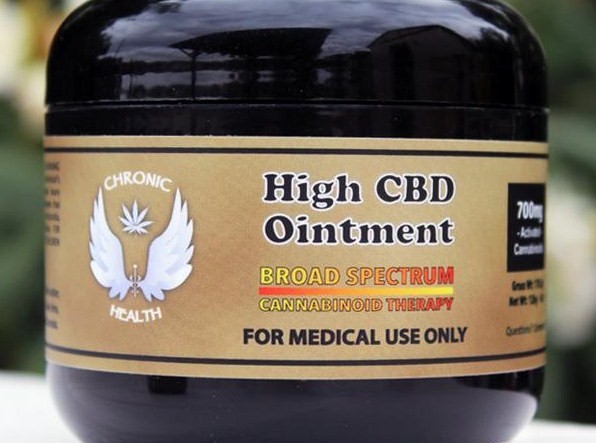
- Chronic Health (Green Halo) High CBD Ointment uses high levels of CBD in conjunction with other pain relieving cannabinoids to tackle a wide spectrum of medical conditions. Combined with almond oil, avocado oil, coconut oil, Shea butter, cocoa butter and beeswax, their CBD ointment offers a wonderful scent along with strong antibiotic and anti-inflammatory properties. Their products come in 350mg and 700mg CBD containers.
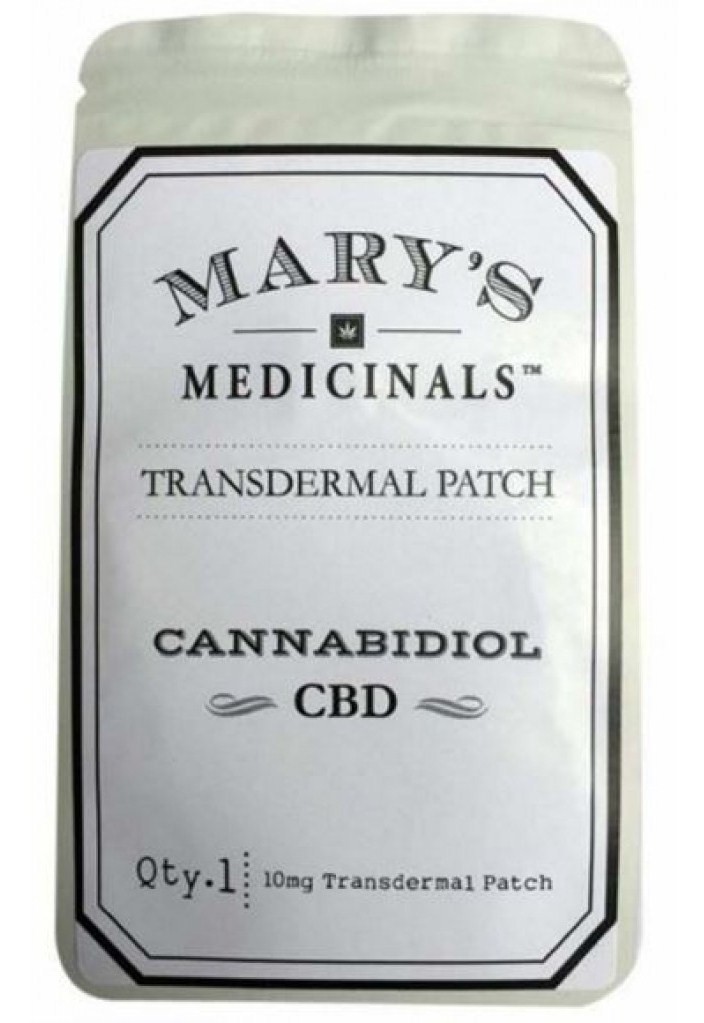
- Mary’s Medicinals has gained a lot of attention recently for their innovative CBD transdermal patches (also available in indica and sativa), childproof gel pen, topical compound that heals inflammation and back pain, and their Muscle Freeze CBD lotion that soothes and cools sore joints and muscles. Their products are discreet, simple to use, and provide strong, lasting relief. Perfect if you need constant and stable healing.
SEE ALSO: In-Depth Review of Mary’s Medicinals Products
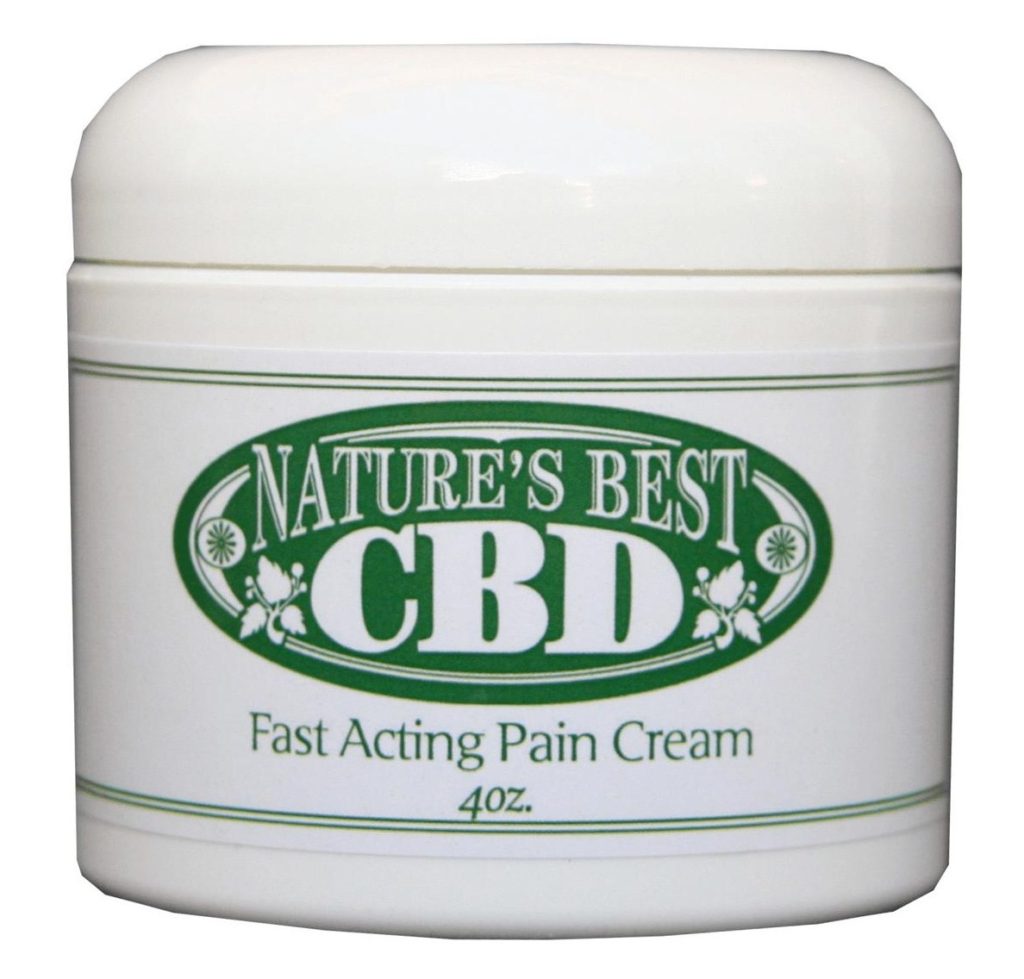
- Nature’s Best CBD is a THC-free topical designed specifically for pain relief. Created with a high absorption rate, Nature’s Best is chemically engineered to quickly penetrate the deepest layers of the skin to provide relief within minutes. Customers use it for fibromyalgia, diabetic nerve pain, eczema and a variety of other skin conditions. Keep in mind that this product also contains menthol to aid in pain relief. It’s also available in a convenient travel size 3-pack.
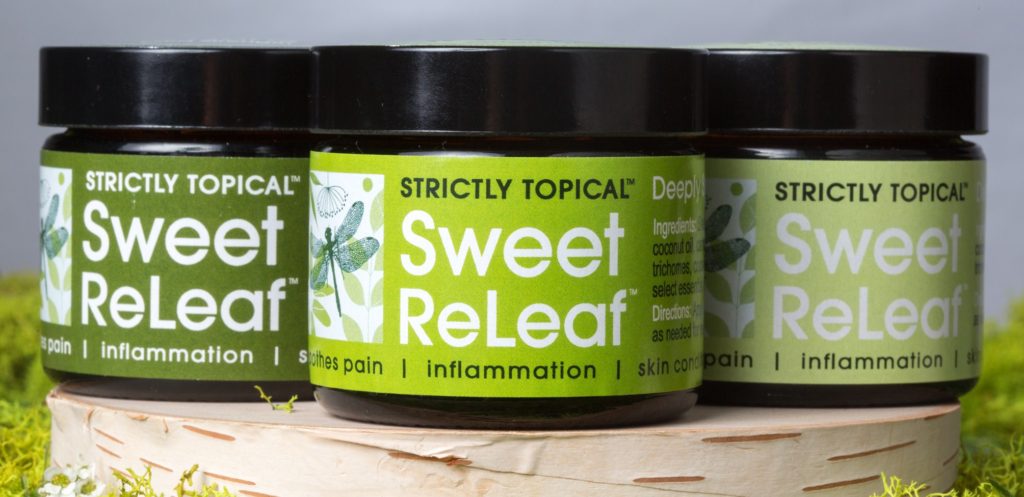
- Sweet Releaf offers a high-CBD ointment that comes scented, unscented and in extra strength formula, if needed. Their ointment is made by hand and contains, cannabis trichomes, coconut oil, Shea butter, cocoa butter and a proprietary blend of essential oils. All ingredients are organic and cruelty-free, as many believe emu oil (a common ingredient found in CBD topicals) to be extracted in inhumane ways. Users have found that Sweet Releaf reduces inflammation, swelling, muscle, back and joint pain, spasms and more.
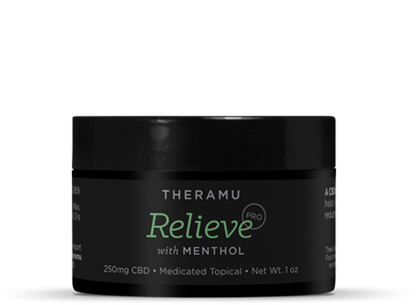
- Theramu Relieve is a fast-acting compound that combines 100mg of pure hemp extract and emu oil (a carrier of CBD) for deeper penetration. Theramu boasts no side effects nor interference with other medications, and that’s only possible because hemp extract is not the same as cannabis-derived CBD. In fact, hemp-derived CBD is available in only trace amounts and does not provide the same wide-ranging medical benefits that true CBD products will. Nonetheless, it can still be a useful anti-inflammatory and wound healer, but should be considered more along the lines of a dietary supplement as opposed to true medicine.
How Can I Make My Own CBD Ointment?

If you’d like to create your own ointment, here’s a CBD ointment recipe to make at home:
- Gather at least 10 grams of organic hemp for a CBD only ointment, or combine it with ½ oz of herbal cannabis for a combined CBD-THC effect.
- Grind all leaves and stems with a coffee grinder, then place them into a jar.
- Pour an organic, preferably extra virgin carrier oil like coconut or almond, over the hemp/cannabis. The ground hemp/cannabis should be completely covered in oil.
- Seal the jar tightly, fill a saucepan with 2-3 inches of water, then place the jar into the pan. Bring to a low boil for 3 hours. Be sure to refill the pan when the water level gets too low.
- After 3 hours, remove the jar from the saucepan and allow it to cool at room temperature.
- Repeat the low boiling process over the next 2 days for another 3 hours each day; this will increase the ointment’s potency.
- On the 4th day, use a cheesecloth to strain the ointment into a new jar to remove the excess debris.
- Add beeswax, cocoa butter or Shea butter to thicken and firm up your ointment. Now it’s ready to use!
- Store in a cool, dry place otherwise the ointment’s consistency can change dramatically.
How Can I Buy CBD Ointment & Other Topicals?
Not in the mood to make your own CBD ointment? Rather leave ointment making to the professionals, you’re in luck! Finding some high-quality CBD cannabis ointment takes just a few clicks on getnugg.com.
Nugg provides safe and legal access to the relief you require. Simply enter your zip code and gain instant access to several vetted cannabis dispensaries near you. Nugg also provides customer-rated storefront collectives and delivery options for CBD ointments along with a plethora of cannabis topicals to be delivered straight to your doorstep!
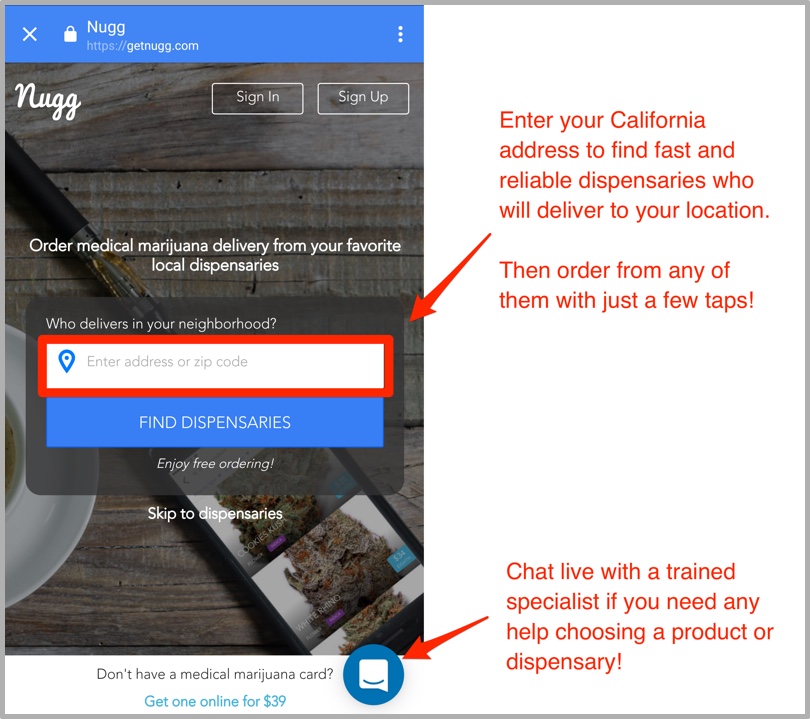
Though many online retailers will claim they can ship products containing CBD your way since CBD is legal to use, keep in mind that shipping these CBD products is actually illegal. A medical marijuana recommendation or card must be presented to purchase CBD products within the state of California and everywhere else.
If you’re in need of a medical marijuana card, just visit NuggMD to get yours in minutes. There’s no appointment needed, and you won’t be charged the small $49 fee unless your doctor approves!
Mary’s Medicinals Review: Transdermal Patch, CBD Capsules & More
13 CommentsThis post explores and reviews one of the most revolutionary product-manufacturers in cannabis — Mary’s Medicinals, a company that has pioneered a new form of cannabis consumption.
As you’re probably aware, there are almost as many ways to ingest medical cannabis as there are reasons for ingesting it. But you may not realize there are new cannabis products you put ON your body instead of IN your body, and these delivery methods are making the whole industry take notice.
What you'll learn in this post:
[Click any of the section titles below to jump there]
About Mary’s Medicinals
Starting in 2013, Colorado-based Mary’s Medicinals, a company dedicated to advancing medical marijuana technology, began distributing transdermal patches and topical gel pens that are carefully dosed, beautifully packaged, and highly effective. Today, the entire line of Mary’s Medicinals cannabis products are finally available wherever marijuana is sold legally. Thanks to great cannabis delivery services like Nugg, your THC-infused patch is just a few taps or clicks away!
The best part about Mary’s revolutionary new way to administer marijuana is the head-spinning array of choices. If we’re just talking about transdermal patches (don’t worry, I’ll get to the other exciting products shortly), you can get the 2 “x2” medicated patch in the following varieties: 10mg of CBD , CBN , THC or CBD/THC; and 20mg of indica or sativa.
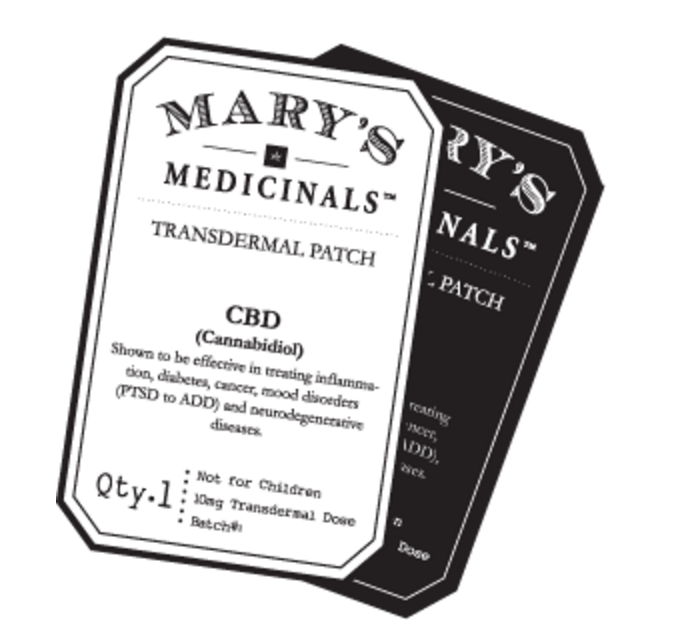
We put Mary’s new medicated patches to the test below, but first we’ll look at the history of the patch itself. After all, transdermal patches are nothing new. You probably know of nicotine patches used for smoking cessation, but did you realize that transdermal patches have been around since 1979, when the FDA first approved them for administering the drug scopolamine to combat motion sickness? Since then, the patch has delivered everything from birth control to vitamin B12.
In many ways, a medicated adhesive patch is the ideal way to ingest cannabis. Most importantly, it releases the cannabinoids in a constant, controlled manner. This time-release property is a perfect complement to the medicine’s analgesic effects, and it may be the most convenient way to take your medication ever – stick one and done.
Do Mary’s Medicinals Transdermal Patches Work?
In a word, yes. You will start feeling the effects about 25 minutes after you slap it on. The effects are quite subtle at first, but also very enduring – not 8 to 10 hours like Mary’s website claims, but a solid 4 to 6 hours of extended relief. The THC “high” is as potent as a double-dose cannabutter edible, but lasts longer, and the CBD pain-relieving properties are out of this world.
Mary’s most popular cannabis patches, and the only ones we tested, were the 10 mg. CBD/THC combination patches with a 1:1 ratio, and the 20 mg. THC Sativa patches. They cost about $10 apiece, less in multipacks. The most remarkable effect noticed by everyone in our diverse sample, is the analgesic effect of transdermal CBD on old, forgotten aches and pains you’ve simply accepted and learned to live with. Several of our test patients, who suffer from different ailments helped by cannabis, were surprised to experience an absence of discomfort in joints and muscles that were normally a problem, including this writer!
Both a nagging ache in my shoulder, and a lifelong knee pain simply disappeared. I had suffered for years, and gotten used to the soreness, so it was a pleasant surprise to get some relief I didn’t bargain for. These effects wear off about 4 or 5 hours after applying the patch, but you can then light up a bowl and keep the medicine flowing. Seriously, a joint or a vape pen hit are exquisite after your patch starts to wear off. The 20 mg. THC patch was designed primarily for recreational users, and it will keep you comfortably medicated for half the day. Our test of the Sativa patch proved to be the perfect focus for daytime use, more of a natural pick-me-up – Mary’s non-drowsy formula, if you will.
As expected, a few of our patients inquired about using multiple patches at the same time. According to Mary’s Medicinals’ Chief Scientist Noel Palmer, multiple patches can be applied, including mixing and matching the different types. In fact, Palmer recommends two patches for regular cannabis users or large body types. You can’t O.D. on cannabis, but applying more than two patches is downright wasteful, not to mention expensive. If you prefer uninterrupted low-dosage relief, says Palmer, feel free to cut each patch into four pieces, and apply one quarter at a time.
The patch should be applied anywhere on your body where you see veins below the skin – wrists, ankles, or the top of your foot. They are not any more uncomfortable to remove than a Band-Aid, but if that thought makes you queasy, soak the patch in warm water before removing. Remove any residual adhesive with rubbing alcohol.
Mary’s Medicinals New Products
While this proprietary line of medicinal patches is spreading quickly through the cannabis community, and putting Mary’s Medicinals on the map, the company has a number of equally revolutionary products on the market.
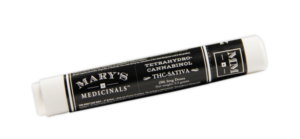
- Transdermal Gel Pen – The Transdermal Pen is like the patch, except you squeeze out 2 mg of either CBD, CBN, THC Sativa or THC Indica gel, which is rubbed into the skin to ease soreness and relieve pain.
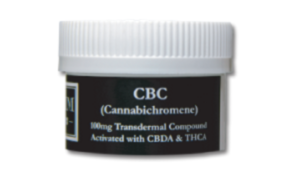
- Transdermal Topical Compound – an all-natural analgesic cream containing 100 mg of active cannabinoids, including CBN and THC, which is reported to be the balm-dot-com for stiff muscles and inflammation.
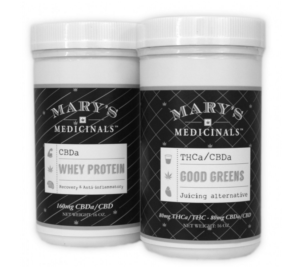
- Cannabinoid Green & Protein Powder Mixes – Mary’s has found a method of encapsulating fresh plant material that retains the nutritional value and active cannabinoids, available in powder form mixed with either whey powder or greens. Maybe the perfect product for those who love combining cannabis with their exercise and workout routines?
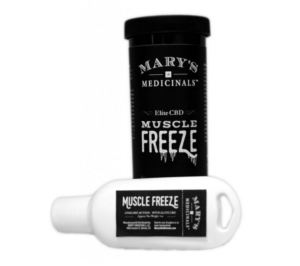
- Elite CBD Muscle Freeze – This is Mary’s newest product, a combination of CBD and natural plant extracts for a soothing and cooling cream that eases sore muscles and provides a warm glow you’ll never get with Ben-Gay.
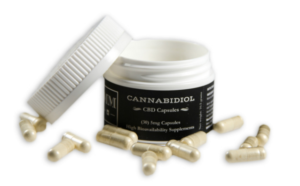
- CBD/CBN Capsules – Mary’s capsules are 100 percent plant-based, vegan, GMO-free, gluten-free and contain no additives or organic volatile impurities. Each container contains 30 5mg. CBD/CBN capsules that are 100% non-psychoactive, meaning they’re intended strictly for medical use and their pain relieving properties.
We did not try the gel pen (or other products for that matter, but we will), but noted that it’s a sophisticated instrument for exact dosing and includes a child-safety feature. Simply rotate the top portion of the pen clockwise to unlock the child safety mechanism, and back the other direction to lock it after dispensing. To dispense, push down on the top of the pen – the tip will dispense 2mg of gel per click – rub this into a veinous area such as your wrist.
If you’re at all curious about exploring these products in more-depth, you should definitely check out the Mary’s Medicinals website, where you can see how the founders are dedicated to natural pain-killing techniques and cutting-edge cannabis medicine. Their slogan, “For us, it’s simply black and white” is reflected in their simple philosophy and in their elegant, old-timey black and white web pages that hark back to 100 years ago.
And if you’re looking to buy any of Mary’s Medicinals products, you can do a simple (but powerful) search in Nugg to find which local dispensaries are currently able to deliver these products to you.
How Do Transdermal Products Compare to Other Cannabis Medications?
It’s impossible to compare. While patches and transdermal gels are a godsend for long trips and a perfect way to time-release your medication, you may miss the sensual experience of inhaling a thick cloud of smoke, or of biting into a delicious brownie.
On the plus side, Mary’s products are delivered directly to the bloodstream avoiding first-pass metabolism by the liver and breakdown by stomach acids. This gives their products an effective dosing of approximately 10 fold over anything else on the market, according to the Mary’s Medicinals website anyways. Many of their patches contain THC which is also the primary active ingredient in cannabis. However, smoking cannabis high in THC results in a sudden “high” that wears off quickly, while Mary’s Patch is designed to deliver a slow and consistent long-term medicinal dosage. Their cannabinoid specific products, such as THCa and CBD, are non-psychotropic, so they are much less like smoking.
Their list of ingredients, as displayed on the packaging, includes carefully extracted Cannabis oil, which is cannabinoid- and terpene-enriched. A proprietary carrier compound delivers the active medicine directly to the bloodstream for maximum efficiency and bioavailability. Plus, all of their patches are made with hypoallergenic silicone backer and are latex-free.
However, a guy who claims to have helped develop the transdermal cannabis patch has been trolling (well, it depends how you see it) medical marijuana boards and offers a little shade. He says the Mary’s patch is not all-natural, and that it contains chemicals in both the patch and the adhesive. Furthermore, he reminds us that ALL transdermal patches come with risks.
Remember that our skin is a fairly effective barrier, but it’s not 100% fool-proof. It’s been protecting our innards for hundreds of thousands of years, and it will never let stuff enter your body without a fight. In order for a transdermal job to do its job, it must include an agent that relaxes the skin to let the medication seep into your bloodstream. Unfortunately, in this relaxed state, the area of skin covered by the patch also lets you take in smog and other environmental toxins intravenously.
Sounds scary, we know, but even the skeptical patch developer considers the patch and transdermal gel pen to be safe. Just be sure to clean the area with alcohol only – don’t use soap – and cover the dab of gel concentrate with a chemically-resistant material, like Teflon sheet.
Patient Testimonials
“This works better than any medicine I’ve tried for my fibromyalgia, and it’s also helping my chronic anxiety. It’s pretty incredible” — Ron, 65
CBD & THC have been known to help shrink tumors. I know that’s what happened to me. These patches saved my life.” –Steven, 38
“I’ve been enduring chronic neurogenic pain for many, many years. I tried some of your patches and they really worked. Better than morphine, methadone, anything.” –Kelly, 45
And the Winner Is…
Mary’s Medicinals innovative topical and transdermal products have won many awards, including the Cannabis Business Awards 2014 Invention of the Year and Best New Product at the prestigious High Times Cannabis Cup. We couldn’t agree more – transdermal products with precise dosing and maximum effectiveness are here to stay.
You can decide for yourself, because Mary’s Medicinals products are currently on the shelves of your favorite dispensary. Or you can simply visit Getnugg.com, the GrubHub of medical marijuana delivery services, and have Mary’s convenient patches, creams and powders at your door in about an hour. Nugg delivery is now available in over 60 California cities, and provides online research and thousands of products from local cannabis dispensaries, with 24/7 customer service and no cost to you. Register below for free home delivery.
Transdermal ingestion of cannabinoids may not be everyone’s cup of tea, but in this instant-gratification world of potent concentrates and red-hot dab hits, Mary’s Medicinals’ transdermal marijuana patch is certainly a welcome relief.



